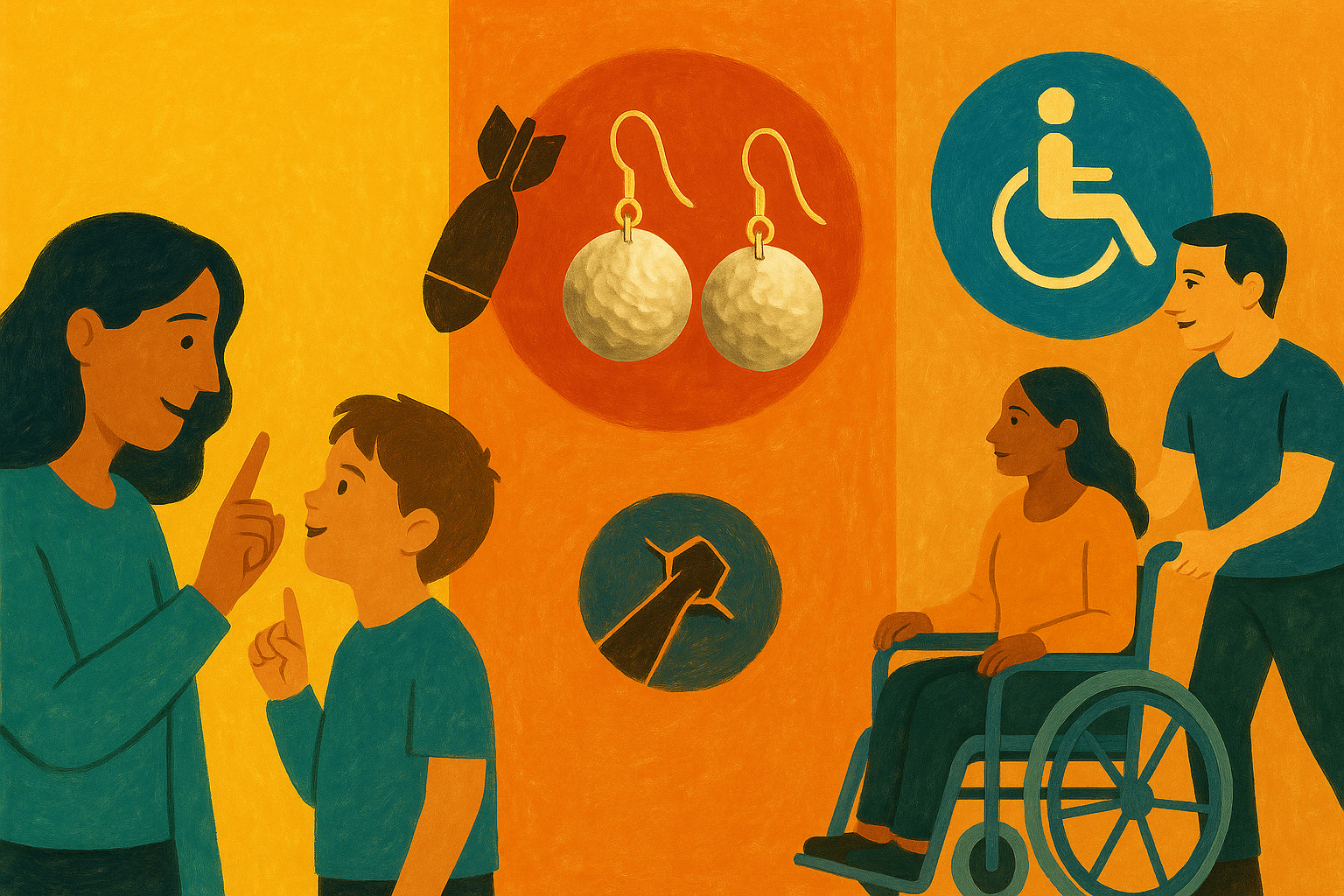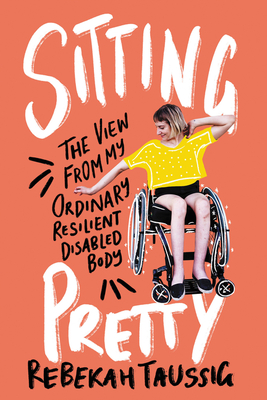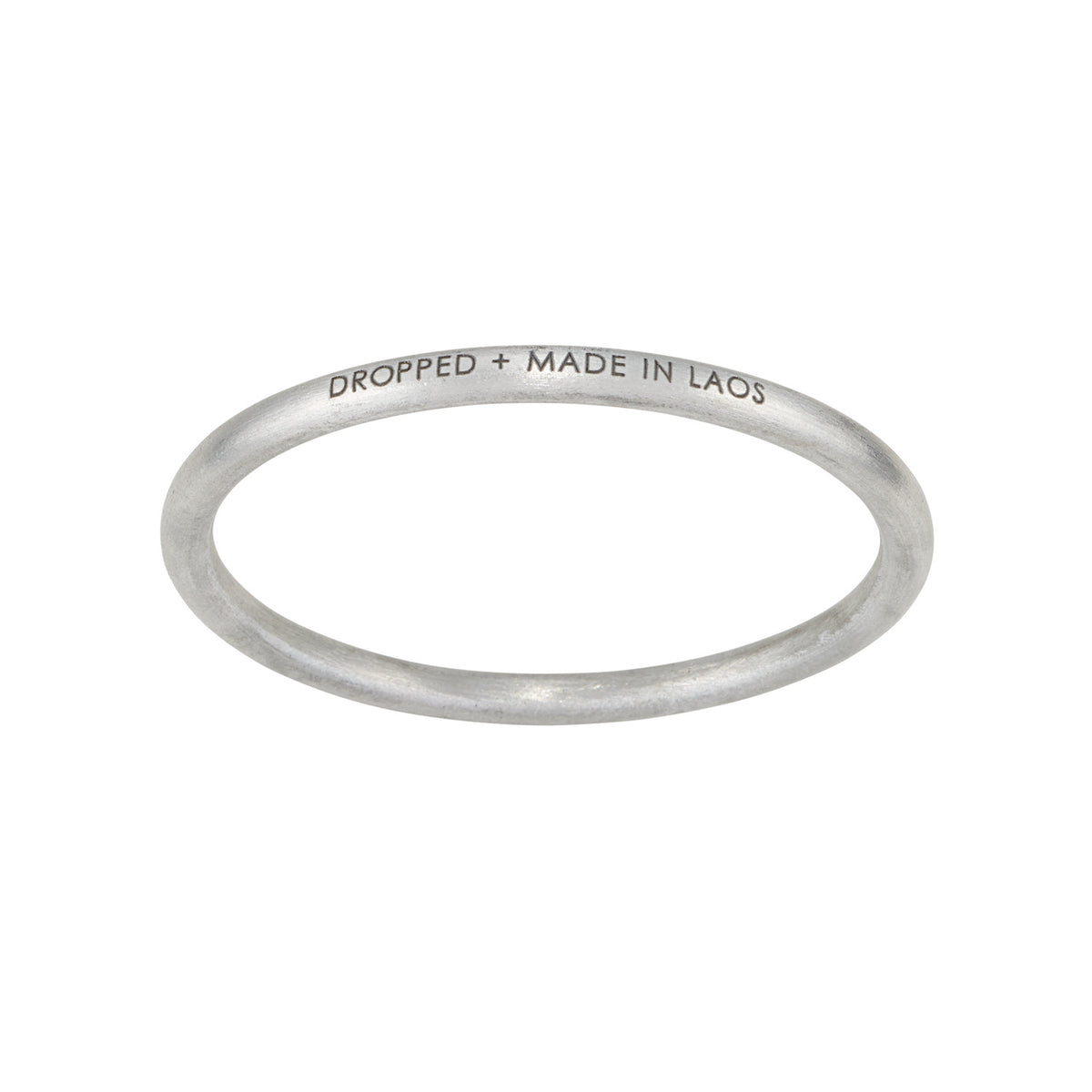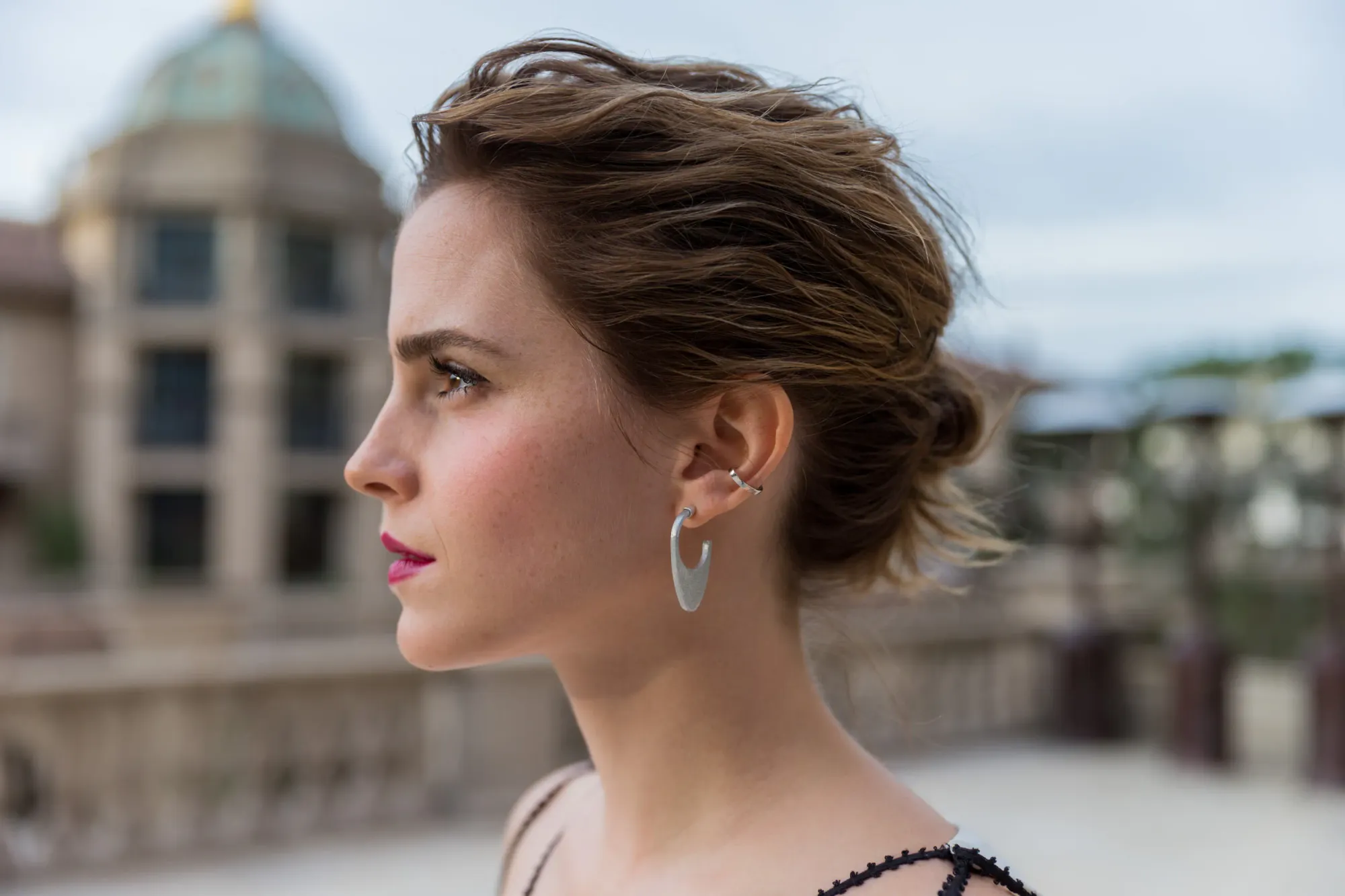In Good Co. — Issue 003: Supporting Non-Verbal Kids, Buying Back Bombs & The Disability Blindspot

Welcome to In Good Co., your weekly dispatch on neurodiversity and causes worth caring about.
🟣 Stimmates® Spotlight
Raising Non-Verbal Kids: Learning to Listen Without Words
If your child doesn’t speak, it doesn’t mean they have nothing to say.
As the parent of a nonverbal child, I constantly wonder what they’re thinking. And while we often frame speech as the gold standard of social connection, I’ve come to realize that the real connection exists in everything but words.
“Raising a non-verbal child doesn’t mean waiting for them to talk. It means re-learning how to listen.”
My journey has been one of unlearning and relearning. Instead of anxiously waiting for those “first words,” communicating with my nonverbal son has taught me the importance of “tuning in” or “tapping into” his frequency and paying attention to what’s already being said:
- A hand flap might mean excitement 👋
- A finger pointed in the air could signal a request or a specific need, like food or comfort ☝️
- Eyes darting away might be a sign of overstimulation 👀
- A change in breathing may indicate frustration, anxiety, or discomfort 😮💨
“You become a kind of detective, decoding subtle cues.”
- The specific sounds they make when they’re happy
- The way they pull you to the pantry door for a snack
- The way they touch your face to show love and affection
These are not random. This is your child communicating. It’s deliberate, expressive, and deeply personal.
Imagine hearing words around you all day but not being physically able to say them. Not because you don’t understand them. Not because you don’t want to speak. But because your brain hasn’t built that bridge between comprehension and motor planning.
This is called apraxia of speech, and it’s common among neurodivergent children. It’s often misunderstood or misdiagnosed as an intellectual disability, but it’s not a sign of low intelligence. Nor is it emotional or behavioral. The barrier is neurological. It’s about access, not ability.
The words are there, but the brain can’t easily retrieve, formulate, or articulate them.
And that’s why it’s so important to pay attention to the communication that is happening. Because even when it’s not verbal, it’s still deliberate and rich with meaning. It may be silent, but it’s still a pure, intentional, and unmistakable form of connection that speaks volumes.
💜 Friends & Co. (Spread the Love): Here are a few trusted resources and orgs to help you navigate your journey.
- 🧠 PrAACtical AAC: In-depth tools, visuals, and guides for using AAC across ages and abilities.
- 🧩 Autistic Self Advocacy Network (ASAN): Disability-led org advocating for neurodivergent rights and communication equity.
- 📱 AssistiveWare AAC Resources: Guidance for getting started with speech apps like Proloquo2Go.
- 📚 “Start Here” from CommunicationFIRST: A disability rights organization dedicated to protecting and advancing the rights of non-speaking individuals.
Learn more at Stimmates®, a welcoming, safe space for neurodivergent people and their families to connect and thrive. Explore resources, share authentic experiences, and find support designed to make life a little less isolating.
🟠 Communitees™ Corner
Article 22: Buy Back the Bombs
Article 22 isn’t just a jewelry brand. It’s a movement forged from the wreckage of war. Founded in Laos and developed in partnership with advocacy orgs like Legacies of War and Mines Advisory Group, Article 22 transforms shrapnel and unexploded ordnance (UXO) into handcrafted jewelry that tells a story of resilience, reclamation, and peace.
“Peace is the bomb.”
Every piece is made from bomb fragments dropped during the “Secret War” in Laos (1964–1973). To this day, Laotian children risk unknowingly encountering these remnants.
Article 22’s first design was the PEACEBOMB bracelet, but it is their Dome Earrings, worn by actress Emma Watson, that helped catapult their cause, with each pair made from melted bomb shrapnel.
Every item is handcrafted by local Laotian artisans using traditional methods and homemade earthen kilns, often in their own gardens. Each piece is engraved with the count of how many bombs were cleared to make it.
The brand takes its name from Article 22 of the Universal Declaration of Human Rights, which affirms everyone’s right to social security through international partnerships.
Each piece of jewelry is a message of peace, opportunity, and remembrance. Local artisans in Laos are paid fair wages, and a portion of every sale supports MAG (Mines Advisory Group) to fund ongoing bomb clearance efforts.
🧡 Friends & Co. (Spread the Love): We’re proud to spotlight these cause-driven orgs. Support their work and share their mission however you can.
- Article 22 Official Site – Shop the full collection and read the stories behind the artisans.
- MAG (Mines Advisory Group) – Learn how they’re clearing landmines and UXOs worldwide.
- Legacies of War – A nonprofit leading the push for continued U.S. funding for UXO removal in Laos.
Learn more at Communitees™, where cause-driven apparel gives more visibility to missions that matter. We collaborate with nonprofits, artists, and advocates to amplify messages of hope, equity, and change.
🔵 Advocacy Angle
The Blindspot: Why Do Disabled People Get Left Behind?
We rally for lost pets. We go viral for broken bones. But when it comes to lifelong disability? Society gets uncomfortable. Polite. Detached.
We have empathy for the wrong things—the temporary, the explainable, the photogenic. But when disability doesn’t come with a recovery arc or a “you got this” storyline, people start looking away.
And yet, even with rising diagnoses and growing disability visibility, policy rarely follows suit. From housing to transportation, education to voting rights, disabled people are still treated as exceptions, not the 1 in 5 that they are.
And when disability intersects with race, class, or status, the inequities multiply. People with disabilities from marginalized communities often face multiple layers of discrimination, making it even harder to access the resources and support they need to thrive and survive.
We need to stop treating disability as an afterthought and start treating it as a core component of a just and equitable society. It’s not enough to feel good about the progress we’ve made; we have to keep doing the work.
✅ Action Steps: Make it personal. Make it policy.
- 📨 Make your voice heard. Contact your representatives and ask what disability inclusion looks like to them. For too long, the disability community has been ignored in politics. This must change.
- 🧩 Demand real accommodations. Push for policies that center accessibility and transparency in education, transport, housing, and healthcare.
- 🤝 Support the orgs holding government accountable. They’re the ones on the front lines, fighting for the rights and dignity of disabled people.
🌍 Contact Your Reps
- 🇺🇸 United States: State representatives and senators
- 🇨🇦 Canada: Members of Parliament
- 🇬🇧 United Kingdom: Members of Parliament
- 🇦🇺 Australia: Representatives in Parliament
- 🇩🇪 Germany: Representatives in the Bundestag
- 🇫🇷 France: Députés in the National Assembly
- 🇪🇸 Spain: Diputados in the Congress of Deputies
- 📍 Global Disability Rights
Subscribe to In Good Co., where we spotlight the causes, policies, and advocacy efforts shaping humanity and the world. Get a fresh issue in your inbox each morning.
Every issue closes with a little something to carry forward into your day. Call it some good fuel for reflection.
🎵 Sing w/the Co. | AOK by Tai Verdes
📚 Read w/the Co. | Sitting Pretty by Rebekah Taussig

📺 Watch w/the Co. | Rising Phoenix (Documentary)
🛍️ Shop w/the Co. | PEACEBOMB Bracelets by Article 22

“Disability is not a tragedy. Ignoring it is.”
❤️ Spread the Love and keep the good vibes going. We’re not backed by sponsors or grants, so every little bit helps.
👉 Subscribe to In Good Co. for daily dispatches on neurodiversity, advocacy, and causes worth supporting.
👉 Join the Co. to fuel projects like Stimmates® and Communitees™ and keep our mission thriving.
👉 Connect with us. Share your story, amplify a cause, or get featured in our daily newsletter.
👉 Meet our Friends & Co. These are the orgs featured in our newsletter who help keep our mission alive.






Discussion